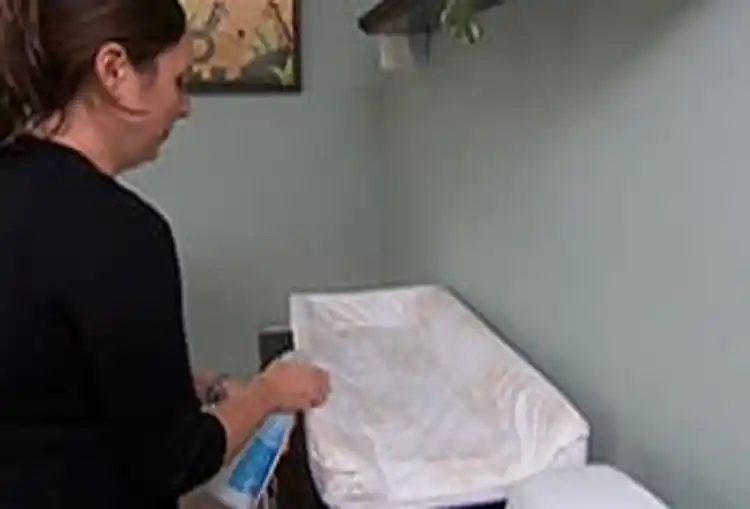Cleaning Baby's Room

Hide Video Transcript
Video Transcript
Narrator
A consistent cleaning routine with a focus on germy hot spots is the key to keeping baby's room clean and fresh. Renee Watson, RN, CIC
The biggest thing is recognizing and realizing the way that germs spread…and that was the airborne route…on dust…through droplets that are coughed or sneezed and then most importantly through contact… And the best way for things to get from one place to another is on hands Narrator
The changing table, diaper bin and crib railings require special attention and should be washed with a disinfectant daily. Harley A. Rotbart, MD
The most dangerous circumstances in the changing room is when the child has a stomach flu, gastroenteritis, vomiting and diarrhea disease, because germs are transmitted, viruses are transmitted in the stool of babies, in the bowel movements of babies. And those germs are directly transmitted from the baby to the hands of the diaper changer, to the face of the diaper changer if careful precautions are not taken. Narrator
Bleach is quite effective at stopping the spread of viral or bacterial contamination. Compromised surfaces should be thoroughly washed with a bleach-water solution— a quarter-cup of bleach to a gallon of water. But be sure to rinse and dry thoroughly and allow any chorine fumes to completely dissipate before placing the baby back into the area. Amanda Vinson
On the weekends we'll try and open the windows and get some fresh air and kind of clean it out… Narrator
Occasional doses of sunlight and dry fresh air can be a healthy practice if your baby isn't prone to certain outdoor allergies. Mold thrives in moist, dark environments. Damp laundry should be washed as soon as possible. Amanda Vinson
I try not to put anything wet in his hamper, so if he's got something wet like a washcloth, I'll hang it out to dry in the bathroom first before putting it in the laundry. Narrator
Sheets and bed covers should be laundered and changed-out at least once a week. Wash them immediately with hot water and bleach if a child has been sick or soiled them. The proper level of humidity will make it easier for your baby to breathe while keeping mold at bay. So depending on the season you might use de-humidifier or humidifier to keep the air-moisture level in the baby's room at between 30 and 60 percent. Because mineral deposits can build up and stagnate water can become a breeding ground for harmful bacteria, portable appliances like humidifiers need to be cleaned frequently. Most manufacturers will include proper instructions for how, and how often, to do this… : VACUUM
Narrator
Floors in baby's room should be cleaned or vacuumed once a week to keep dust from building up. In addition, using a higher efficiency air filter in your heating and AC unit may reduce pollen, mold spores and levels of other allergens and dust throughout your entire home… For WebMD, I'm Damon Meharg. 
